This Was the World’s Largest Camera Back in 1900
![]()
Check out this monster of a camera. It was the world’s largest camera back in 1900, built for the specific purpose of shooting the largest photo in the world of the “handsomest train in the world.”
[N]o railway train in the world had ever presented so uniform and symmetrical design. No train of cars had ever before been built with windows of the same size, shape, and style from mail car to parlor car; the cars in no train heretofore had all been mounted on standard six-wheel trucks; no former effort had been made to have every car in the train precisely the same length and height; and no railway, except the Alton Road, had ever caused the tender of its locomotives to be constructed to rise to the exact height of the body of the cars following; the hood of its locomotives to the exact height of the roofs of the cars. This gave a fascinating beauty to the train.
To capture the beauty of the train, the builders decided they wanted a single panoramic photo to be captured of it. They commissioned Chicago-based photographer George R. Lawrence to shoot the panorama. At first Lawrence wished to shoot the train in sections and then stitch together the panorama during printing, but it was decided that stitching wouldn’t preserve the “absolute truthfulness of perspective.”
So, Lawrence created plans for a camera that would capture a single photo on a gigantic 8×4.5-foot plate — a plate three times larger than the largest plate photographed up to that point.
Building the camera took two and a half months to complete. It had a natural cherry wood body, a small track with two focusing screens (made with semi-transparent celluloid stretched across frames), rubber bellows with a heavy black canvas lining inside, and a curtain plate holder that took 10 gallons of cement to create.
![]()
The bed of the camera measured a whopping 20 feet in length (~6m) when fully extended. It weighed a whopping 1,400 pounds (635kg) when fully loaded and ready to shoot.
Two Carl Zeiss lenses — the largest in the world — were made for the camera. One was a 1676mm wide-angle lens, and the other was a 3048mm telephoto lens (which was used for the train photo).
On the day of the photo shoot, after the camera was transported to the location on a train, a crew of 15 camera operators set up the camera and captured a 2.5-minute exposure.
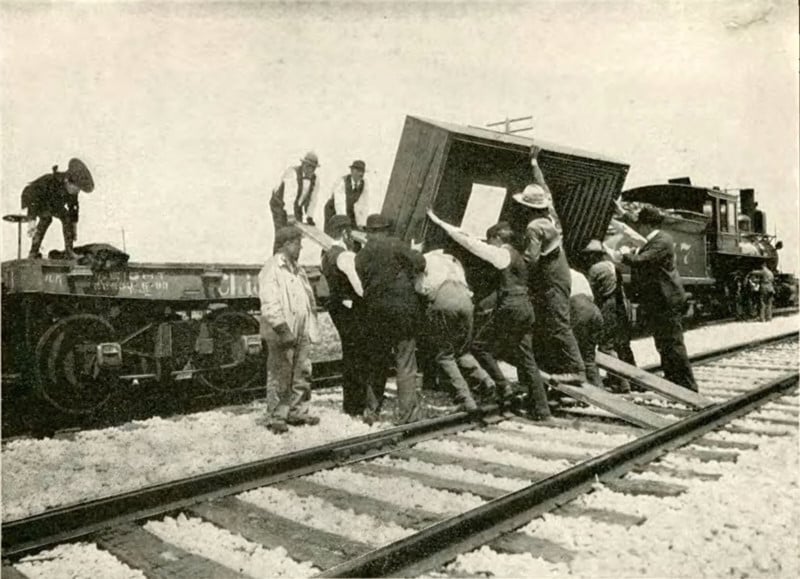
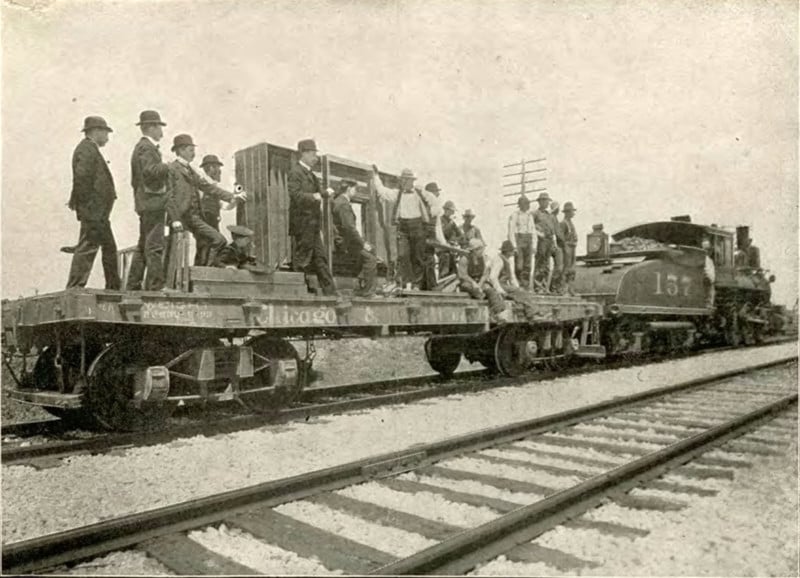
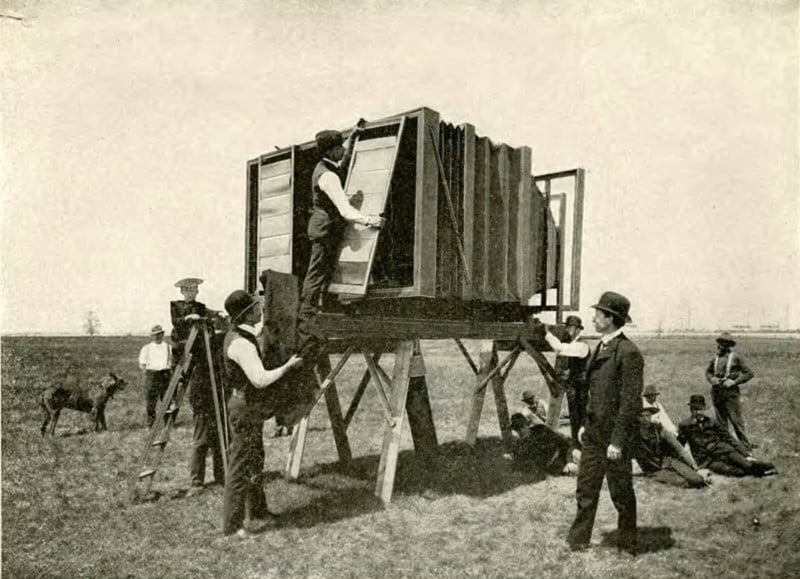
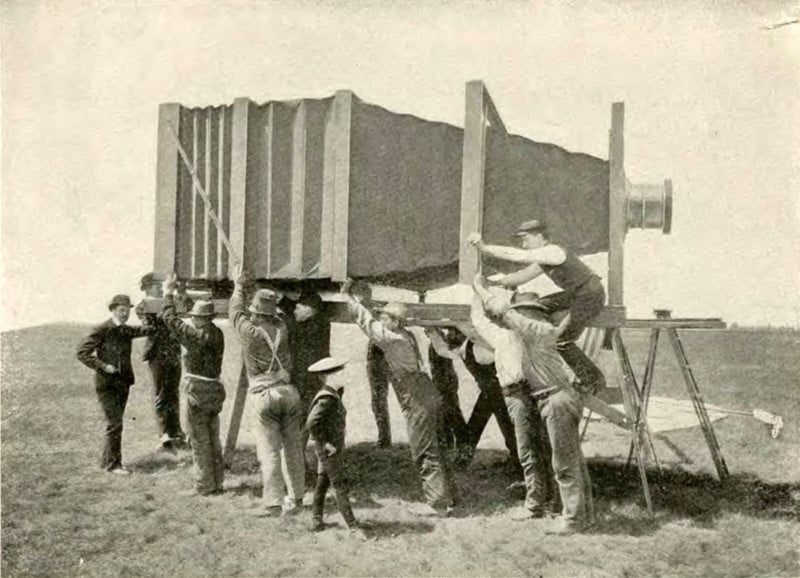
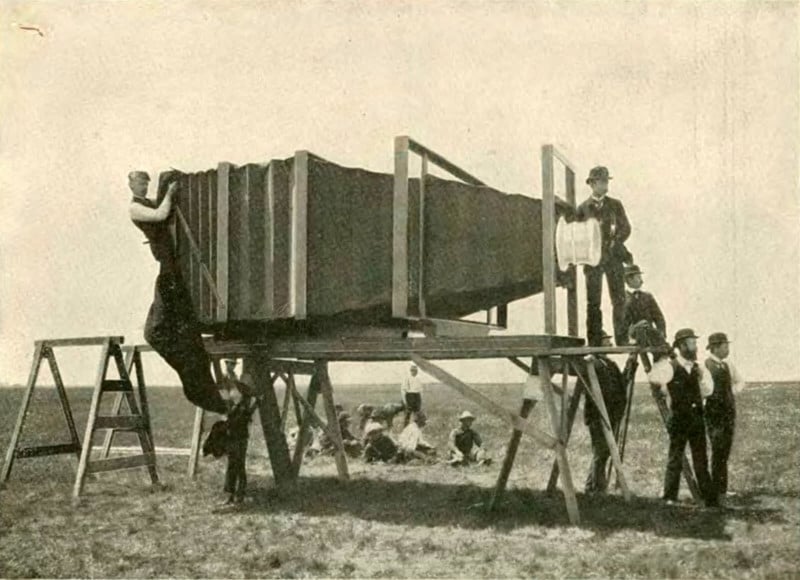
What resulted was the largest photo ever made on a single plate — a beautiful image of the “handsomest train in the world.”
![]()
The photo created a stir when it was exhibited at the 1900 Paris Exposition, and officials requested affidavits before they were willing to proclaim that it was the largest single-plate photo in the world.
(via Indiana Historical Society via Atlas Obscura)
Image credits: Photos used with the permission of the Indiana Historical Society. The images above were cropped from the original historical document.